Gabby Goes Fishing, an animated short by Dave Fleischer, 1941
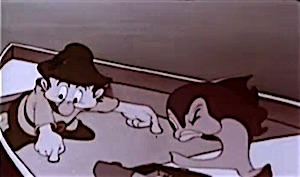
Gabby Goes Fishing, 1941
An animated short by Dave Fleischer
“Gabby teaches a young boy how to fish, even though the boy was doing much better without him.” (IMDB)


Gabby Goes Fishing, 1941
An animated short by Dave Fleischer
“Gabby teaches a young boy how to fish, even though the boy was doing much better without him.” (IMDB)
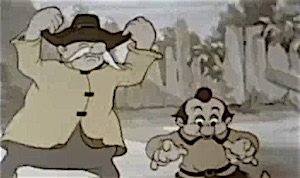
Gabby: Fire Cheese, 1941
An animated short by Dave Fleischer
“Gabby makes good on his pledge to ‘be helpful’ by assisting the local fire department while they put out a fire. When the chief incapacitates himself by getting Gabby’s hat stuck over his head, Gabby takes charge with with disastrous consequences.” (IMDB)

The Bashful Bachelor, 1942
A film by Malcolm St. Clair
Based on their radio program, Lum and Abner’s hapless antics at a general store get them into trouble. A race horse, a lovely lady, a widow and a threatening Sherif all cross their paths in this innocent comedy.
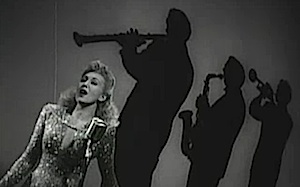
Detour, 1945
A film by Edgar G. Ulmer
A man is suspected of murder after his involvement in two tragic accidents. A suspenseful film noir classic. (Browse our Movie Archive)
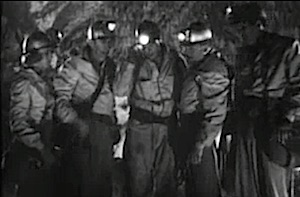
Unknown World, 1951
A film by Terry O. Morse
Explorers drill down deep into the earth’s crust, in an attempt to find a safe haven in the event of nuclear catastrophe (it was the 50s, after all.) Unfortunately the earth’s crust is anything but safe and peaceful. Will or bold explorers survive?

Children of Hiroshima, 1952
A film by Kaneto Shindo
Four years after the atomic bomb was dropped on Hiroshima, a woman named Takako visits her old city, looks up old friends, and faces that terrible aftermath of that tragic day. A powerful anti war statement by director Kaneto Shindo, now a classic of Japanese Cinema. (Browse our Movie Archive)

Escape From Sobibor, 1987
A film by Jack Gold
The dramatic retelling of a bold escape from the horrors of a Nazi concentration camp. An award winning movie starring Alan Arkin and Rutger Hauer.
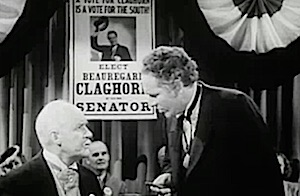
It’s A Joke, Son, 1947
A film by Benjamin Stoloff
A light-hearted, election-year political farce featuring Senator Beauregard Claghorn, the blustery southern windbag, (a recurring radio character) and inspiration for the cartoon character Foghorn Leghorn.

Big Bluff, 1955
A film by W. Lee Wilder
“When a scheming fortune hunter finds his rich wife is not going to die as expected, he and his lover make other plans to get her millions.” (IMDB)
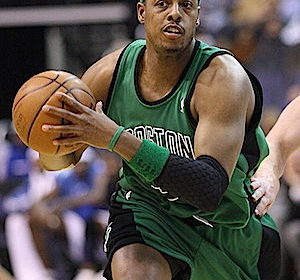
The Management Team of Face Activities would like to take a moment to recognize a great moment in sports history.
On Sunday, the same day the Boston Celtics faced the Cleveland Cavaliers on the court, the team honored legendary small forward Paul Pierce, retiring his beloved number 34. This is the 22nd jersey number the Celtics have retired. That’s the most among all North American Sports franchises.
At six feet seven inches, Pierce, known to admiring fans as “The Truth,” was a player of consummate skill. The veteran of 10 All-Star teams, he enjoyed 19 years in the NBA—-15 of which he played for Boston, to the delight of legions of fans. He averaged 21.8 points and 6 rebounds per game for Boston.
Pierce honed his basketball technique at the University of Kansas, from where the Celtics drafted him in 1998. His career point count is the 18th highest in NBA history, totaling a staggering 26,397. Only one other Celtic, John Havilcek, scored higher, at 24,021. That’s a truly admirable record.
After the 2012-13 season, Pierce and Kevin Garnett were traded to the Brooklyn Nets, in a complicated and controversial deal involving 5 draft picks and 9 players. Many Boston fans consider this a sad day in Celtics history, and have sorely missed “The Truth” ever since.
In addition to his iconic career in sports, Pierce had a strong presence off the court, working with children out in the community, encouraging them to develop academically as well as athletically.
Photo: By Keith Allison (flickr) [CC BY-SA 2.0], via Wikimedia Commons